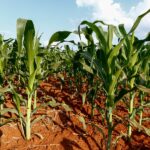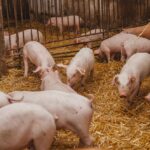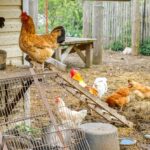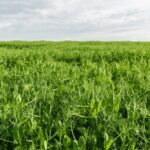Peanuts (Arachis hypogaea) are a valuable crop in South Africa, particularly in regions like the North West Province, where the climate is conducive to their growth. However, achieving high peanut yields requires careful management of soil, irrigation, pest control, and other factors that influence plant health and productivity. In this article, we explore effective strategies for increasing peanut yields in the North West Province.
1. Understand the Climate and Growing Conditions
The North West Province has a semi-arid climate with hot summers and mild winters. Peanuts thrive in warm temperatures and well-drained soils, making the region suitable for peanut farming. However, while peanuts are relatively drought-tolerant once established, they still require consistent moisture during key growth stages, especially during flowering and pod development.
- Optimal Temperature: Peanuts grow best at temperatures between 25°C and 30°C. Excessively high temperatures, particularly during the flowering and pod-setting stages, can negatively affect yields.
- Rainfall Requirements: Although peanuts are drought-tolerant, they need 400-600 mm of rainfall during the growing season, which is often supplemented by irrigation in the North West Province.
2. Choose the Right Peanut Variety
Selecting the appropriate peanut variety for the North West Province is crucial for high yields. Different peanut varieties have varying resistance to pests, diseases, and environmental stressors, and some are better suited to the region’s climate and soil types.
- Variety Selection: Opt for varieties that are well-adapted to the local conditions. In the North West Province, varieties like Virginia, Spanish, and Runner are commonly grown, with Virginia varieties being particularly popular for their higher yield potential and disease resistance.
- Disease Resistance: Choose varieties resistant to common peanut diseases like rust, soil-borne fungi, and peanut mottle virus to reduce the need for chemical treatments and ensure healthier plants.
3. Soil Preparation and Fertilization
Peanuts grow best in well-drained, sandy loam soils that are rich in organic matter. Proper soil preparation is essential for providing a favorable environment for peanut roots and ensuring adequate nutrient availability.
- Soil Testing: Before planting, conduct a soil test to determine nutrient levels and pH. Peanuts prefer slightly acidic to neutral soils, with a pH range of 6.0 to 7.0. Adjust soil pH if necessary by adding lime to raise pH or sulfur to lower it.
- Fertilization: Peanuts are leguminous crops that fix nitrogen from the air, but they still require adequate phosphorus and potassium for optimal growth. A balanced fertilizer with the right amount of nitrogen, phosphorus, and potassium should be applied before planting and during key growth stages. Ensure that micronutrients such as boron and zinc are also included in the fertilization plan.
- Pre-Plant Fertilization: Apply phosphorus and potassium based on soil test recommendations.
- In-Season Fertilization: If soil nitrogen is insufficient, use a low-nitrogen fertilizer after planting. Excessive nitrogen can lead to excessive vegetative growth at the expense of pods.
4. Irrigation Management
Although peanuts are somewhat drought-tolerant, they require consistent moisture, especially during flowering, pod setting, and pod filling. Irrigation is often necessary in the North West Province to ensure that peanuts receive adequate moisture, especially during dry spells.
- Irrigation Timing: Implement irrigation when the soil moisture falls below 50% of the field capacity. Peanuts need frequent, light irrigation rather than deep watering at long intervals. This encourages root growth and enhances pod formation.
- Watering System: Drip irrigation or furrow irrigation are the most effective systems for peanuts. Drip irrigation is particularly beneficial for conserving water and delivering moisture directly to the root zone, minimizing water waste and avoiding waterlogging.
- Avoid Overwatering: While peanuts need consistent moisture, overwatering can lead to root rot and other soil-borne diseases. Monitor soil moisture levels closely and adjust irrigation accordingly.
5. Planting Depth and Spacing
The planting depth and spacing of peanuts are crucial for optimal plant growth and maximizing yields.
- Planting Depth: Peanuts should be planted at a depth of 4-6 cm. Planting too deep may cause the seeds to fail to germinate, while planting too shallow can expose the seeds to the elements and reduce seedling emergence.
- Plant Spacing: Proper plant spacing ensures that each plant has enough access to sunlight, water, and nutrients. Recommended spacing is around 20-30 cm between plants and 75 cm between rows. Adequate spacing reduces competition for resources and helps prevent the spread of diseases.
6. Pest and Disease Management
Peanut crops are susceptible to a range of pests and diseases, which can significantly affect yields if not controlled. Early detection and proper management are key to keeping crops healthy.
- Common Pests: Aphids, whiteflies, peanut weevil, and cutworms are some of the most common pests affecting peanuts. Regular scouting and early intervention with biological or chemical controls are recommended for managing these pests.
- Disease Management: Peanuts are prone to diseases like leaf spot, rust, fungal infections, and soil-borne pathogens. Crop rotation, resistant varieties, and the use of fungicides can help manage these issues. Applying fungicides during the early stages of infection, especially during periods of high humidity, is critical for preventing major outbreaks.
- Weed Control: Weeds compete with peanuts for nutrients, water, and light. Regular weed management, either through hand weeding or the use of herbicides, is essential for reducing competition and promoting healthy growth.
7. Harvesting at the Right Time
Harvesting peanuts at the correct time is critical to ensuring maximum yield and quality. Overripe peanuts may result in reduced quality, while early harvesting can lead to underdeveloped pods.
- Signs of Maturity: Peanuts are ready for harvest when the leaves start to yellow, and the plants begin to dry. The pods should be fully mature and filled, and the skins should be hard. A common sign is when the peanuts’ inner shells turn brown or darken in color.
- Harvesting Methods: Harvesting peanuts should be done carefully to avoid damaging the pods. Use mechanical harvesters for large-scale production or hand-harvesting for smaller farms. After harvesting, the peanuts should be carefully dried and cured before storage to avoid fungal contamination.
8. Post-Harvest Management
Proper post-harvest handling is essential for maximizing peanut quality and reducing losses. Dry the peanuts thoroughly, ideally to a moisture content of around 8-10%, to prevent mold and fungal growth. Store peanuts in a cool, dry, and well-ventilated area to maintain their quality.
Increasing peanut yields in the North West Province requires a comprehensive approach, including selecting the right variety, optimizing soil fertility, managing irrigation, controlling pests and diseases, and ensuring timely harvesting. By implementing these strategies, farmers in the North West can improve their peanut production, maximize yields, and achieve better profitability. With careful planning and management, peanut farming can become a highly productive and sustainable agricultural venture in the region.
Join 'Farmers Mag' WhatsApp Channel
Get the latest Farming news and tips delivered straight to your WhatsApp
CLICK HERE TO JOIN






